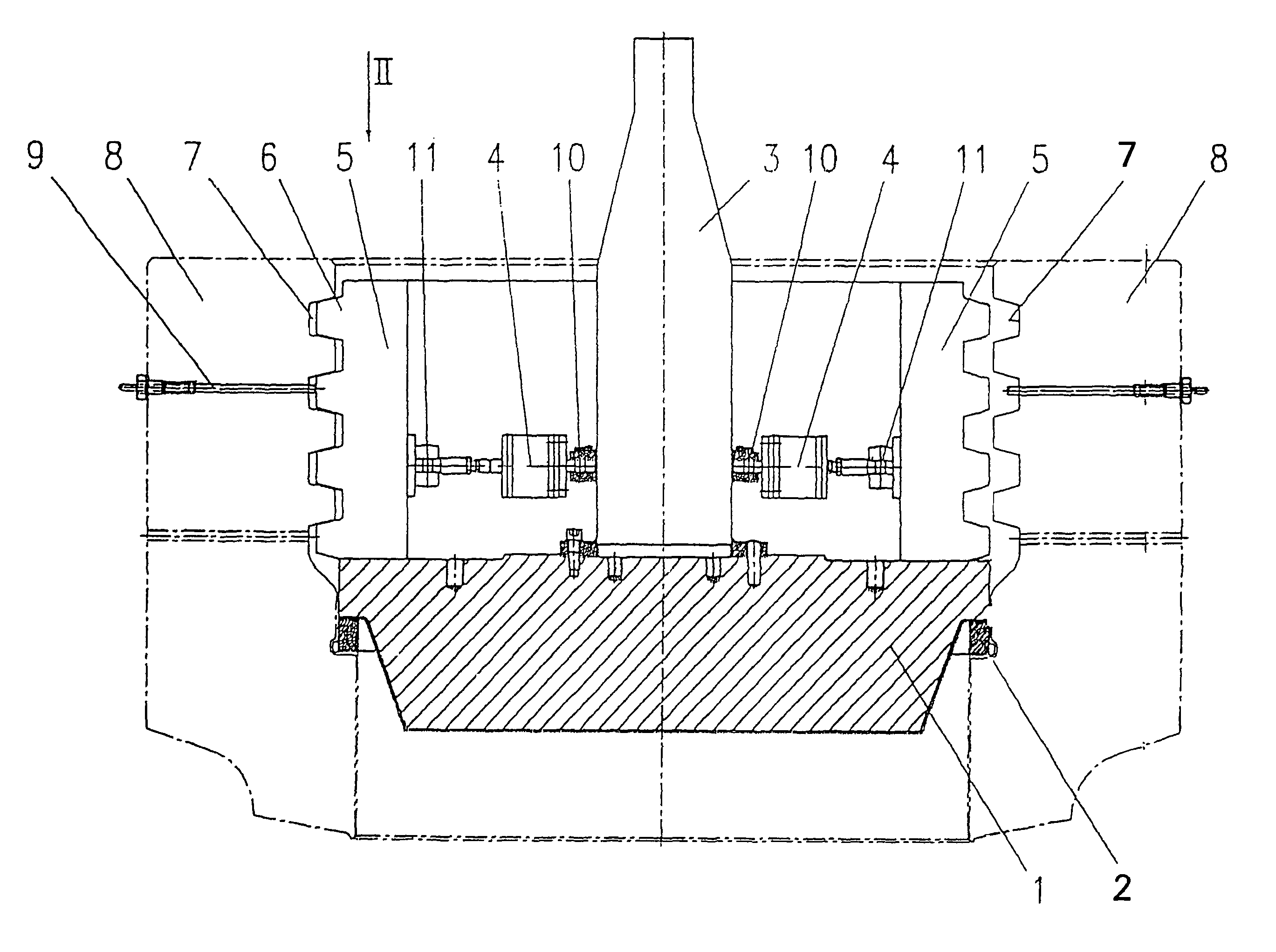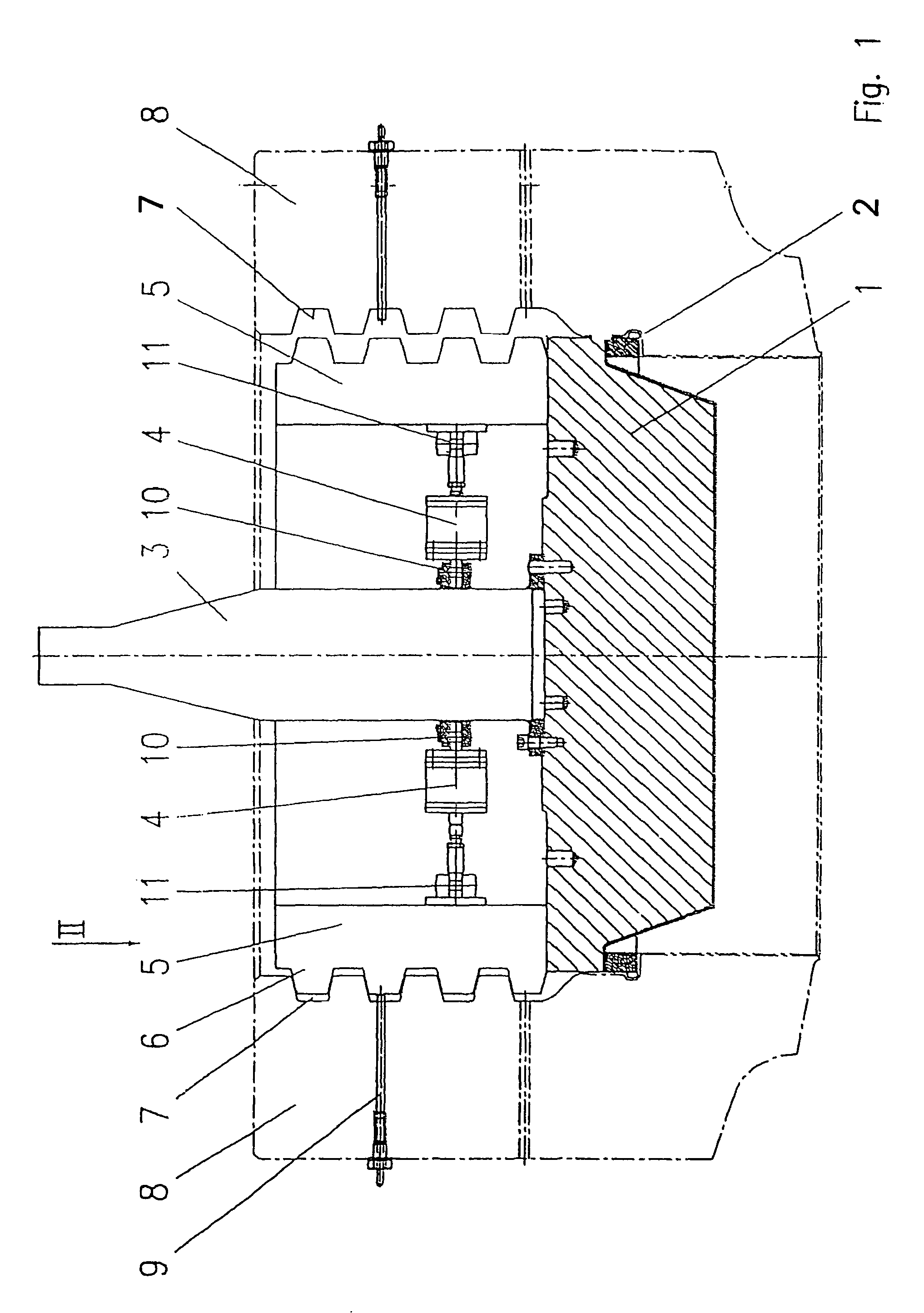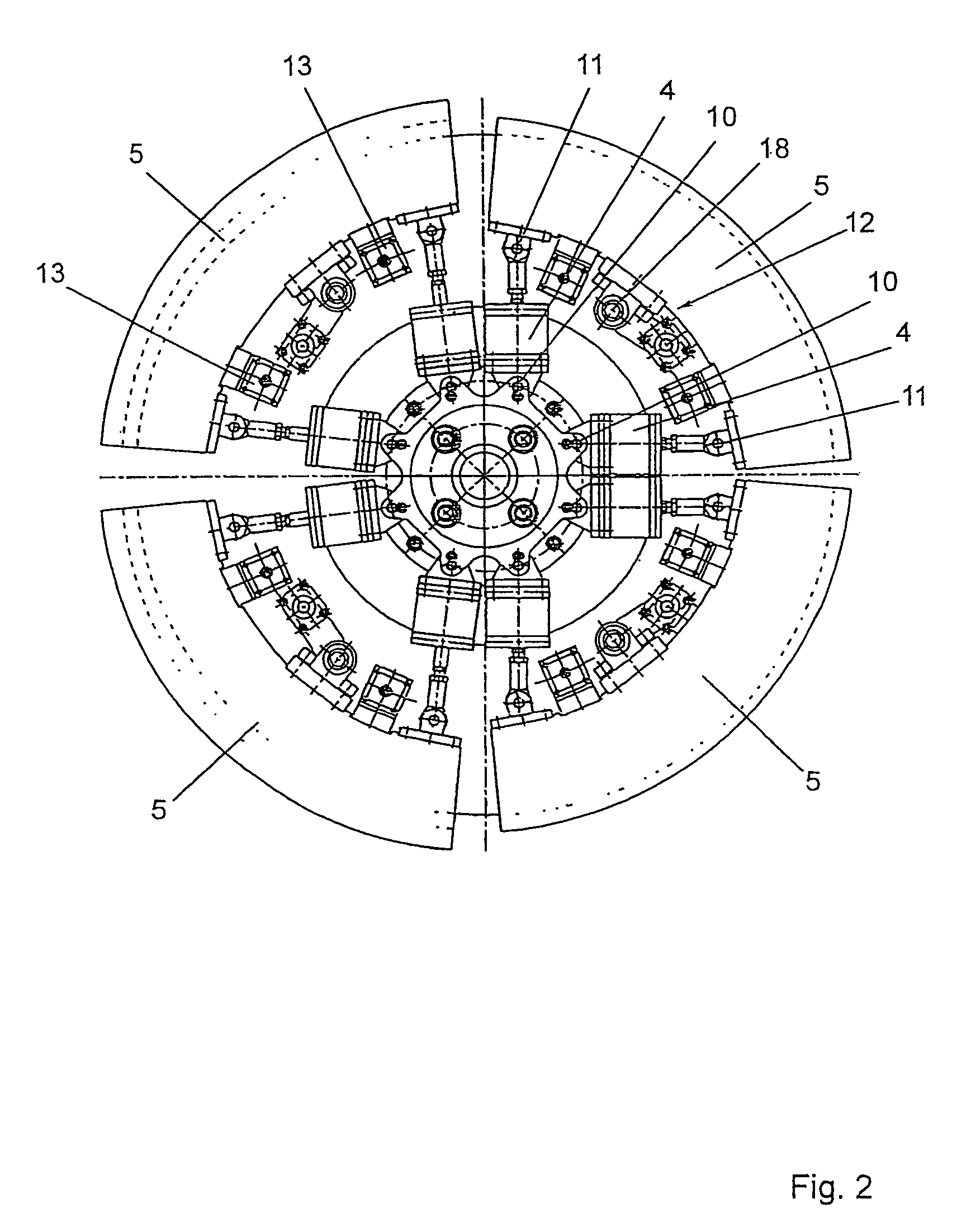Locking device for fixing a lid
a technology for locking devices and lids, which is applied in the direction of clamping mechanisms, closures, pressure vessels, etc., can solve the problems of high force effective on such lids, requiring precise and fail-safe locking devices, and comparatively large device parts, so as to reduce the risk of slipping, and facilitate the insertion on the other side.
- Summary
- Abstract
- Description
- Claims
- Application Information
AI Technical Summary
Benefits of technology
Problems solved by technology
Method used
Image
Examples
Embodiment Construction
[0025]FIG. 1 shows a lid 1, which seats solidly on top of annular sealing elements 2. The lid 1 is raised or lowered by a central actuating rod 3, whereby this central actuating rod 3 simultaneously forms the counter bearing for hydraulic cylinder piston aggregates 4 for the actuator of the locking segments 5. The locking segments 5 on the left hand side of the drawing according to FIG. 1 are in the locking position and engage with their circumference ribs 6 with corresponding grooves 7 on the brink 8 of the container, whereby an actuating rod 9 for a position switch is schematically indicated. On the right hand side of the drawing according to FIG. 1 the segments 5 are still not engaged with the circumference grooves 7 on the brink 8 of the container.
[0026]The cylinder-piston aggregates 4 are via hinge bearings 10 flexibly connected with the device part connected with the lid 1, namely, the actuating rod 3. Further the cylinder-piston aggregates 4 engage via pivot bearings 11 with ...
PUM
 Login to View More
Login to View More Abstract
Description
Claims
Application Information
 Login to View More
Login to View More - R&D
- Intellectual Property
- Life Sciences
- Materials
- Tech Scout
- Unparalleled Data Quality
- Higher Quality Content
- 60% Fewer Hallucinations
Browse by: Latest US Patents, China's latest patents, Technical Efficacy Thesaurus, Application Domain, Technology Topic, Popular Technical Reports.
© 2025 PatSnap. All rights reserved.Legal|Privacy policy|Modern Slavery Act Transparency Statement|Sitemap|About US| Contact US: help@patsnap.com



